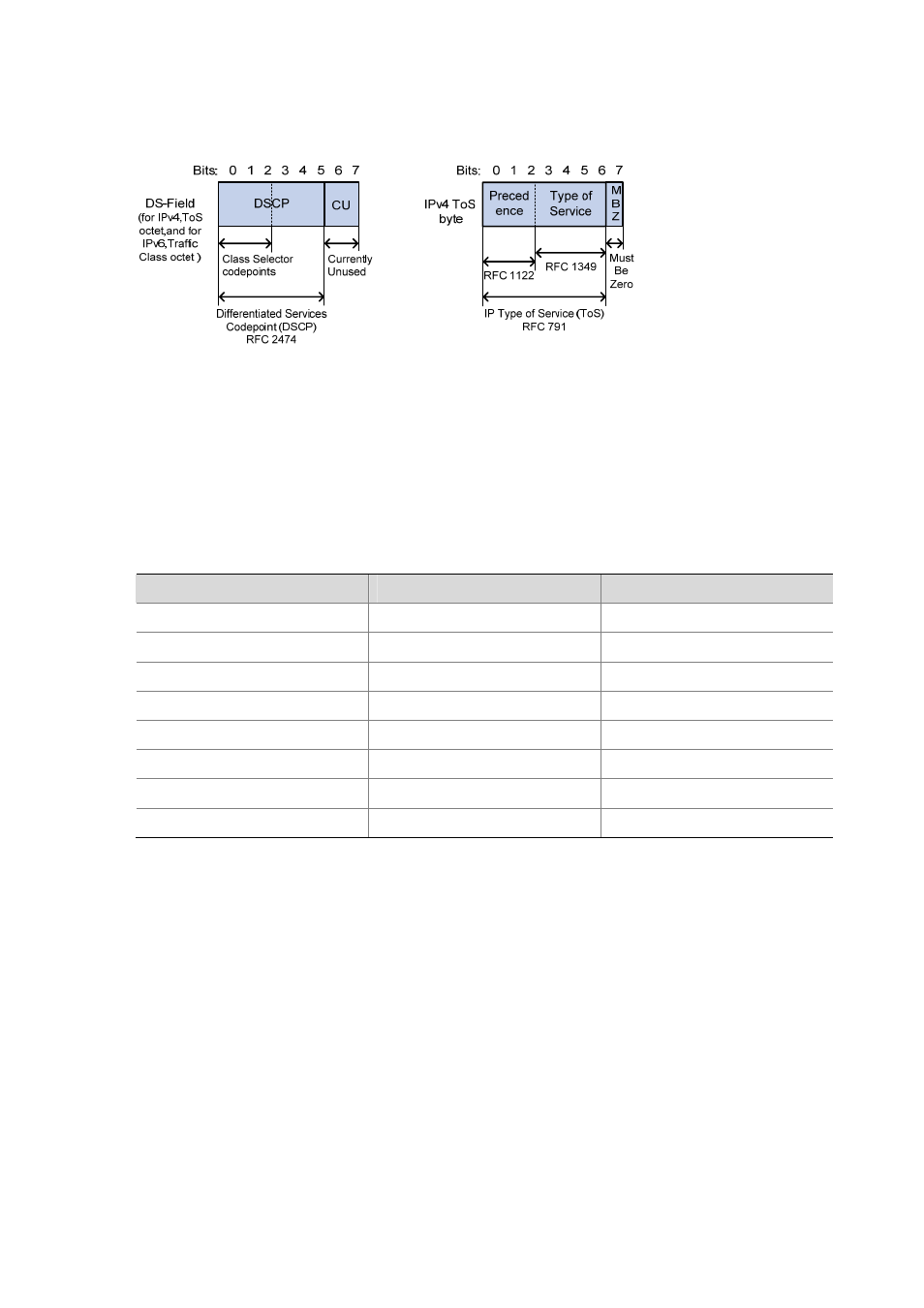H3C Technologies H3C WX6000 Series Access Controllers User Manual
Page 429

44-2
1) IP precedence, ToS precedence, and DSCP precedence
Figure 44-1
DS field and ToS field
The ToS field in an IP header contains eight bits, which are described as follows:
z
The first three bits indicate IP precedence in the range of 0 to 7.
z
Bit 3 to bit 6 indicate ToS precedence in the range of 0 to 15.
z
RFC2474 re-defines the ToS field in the IP packet header, which is called the DS field. The first six
(bit 0 to bit 5) bits of the DS field indicate DSCP precedence in the range of 0 to 63. The last two bits
(bit 6 and bit 7) are reserved bits.
Table 44-1
Description on IP Precedence
IP Precedence (decimal)
IP Precedence (binary)
Description
0 000
Routine
1 001
priority
2 010
immediate
3 011
flash
4 100
flash-override
5 101
critical
6 110
internet
7 111
network
In a network providing differentiated services, traffics are grouped into the following four classes, and
packets are processed according to their DSCP values.
z
Expedited Forwarding (EF) class: In this class, packets can be forwarded regardless of link share
of other traffic. The class is suitable for preferential services with low delay, low packet loss ratio,
low jitter, and assured bandwidth (such as virtual leased line);
z
Assured forwarding (AF) class: This class is further divided into four subclasses (AF1/2/3/4) and a
subclass is further divided into three drop priorities, so the AF service level can be segmented. The
QoS rank of the AF class is lower than that of the EF class;
z
Class selector (CS) class: This class comes from the IP ToS field and includes eight subclasses;
z
Best Effort (BE) class: This class is a special class without any assurance in the CS class. The AF
class can be degraded to the BE class if it exceeds the limit. Current IP network traffic belongs to
this class by default.
